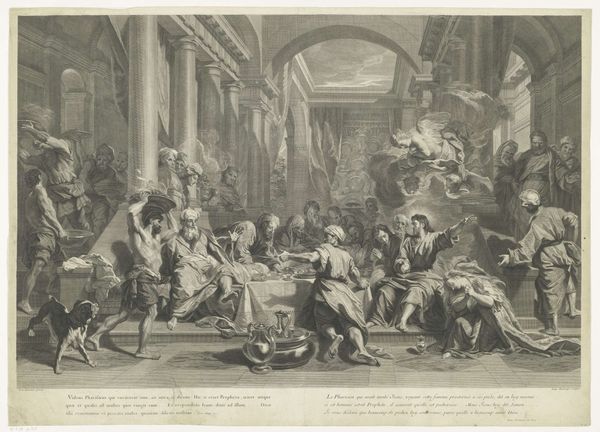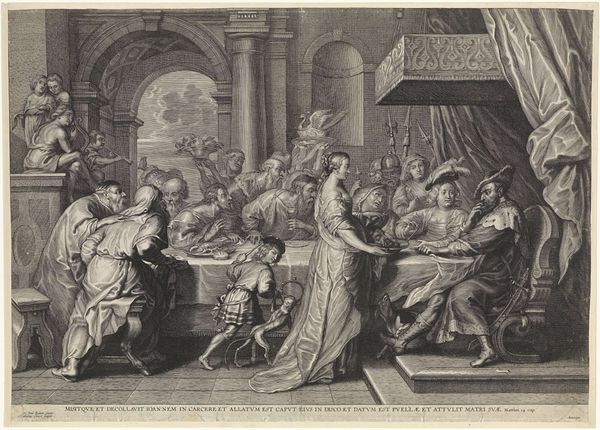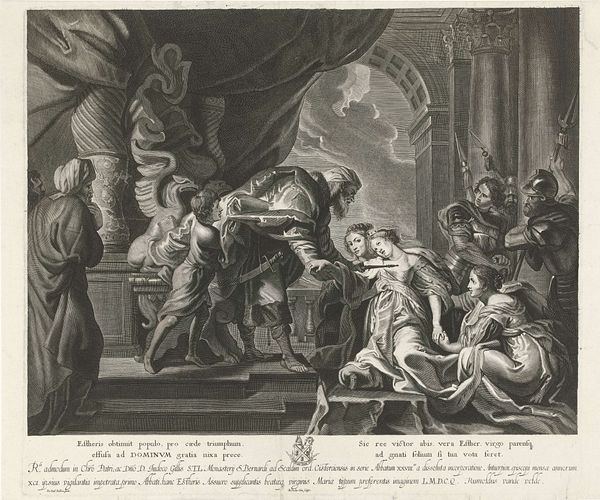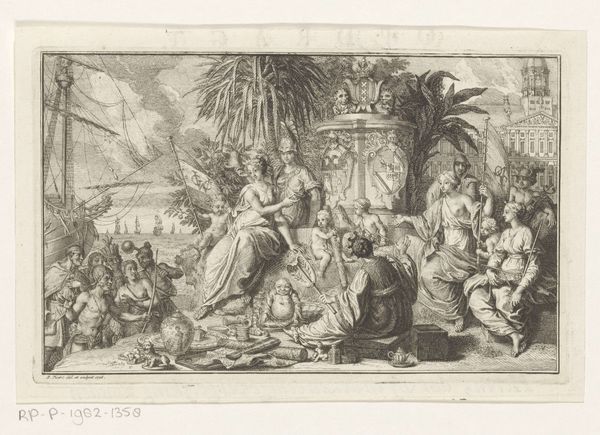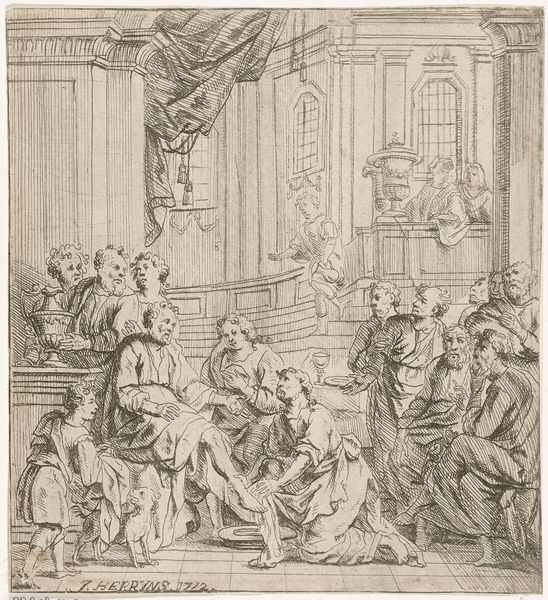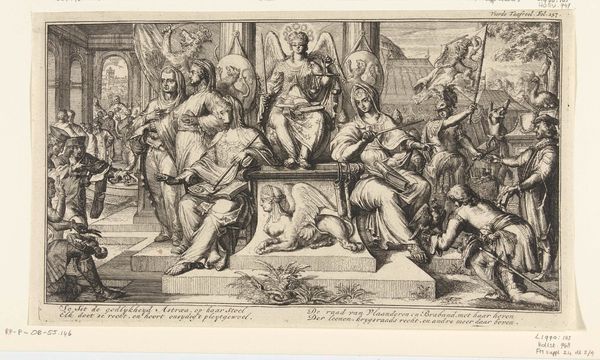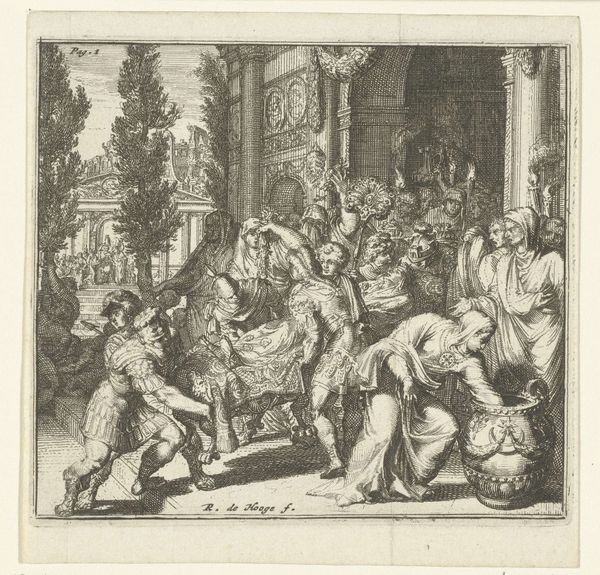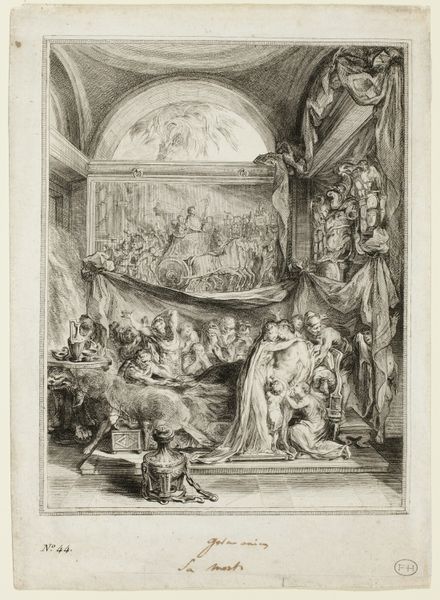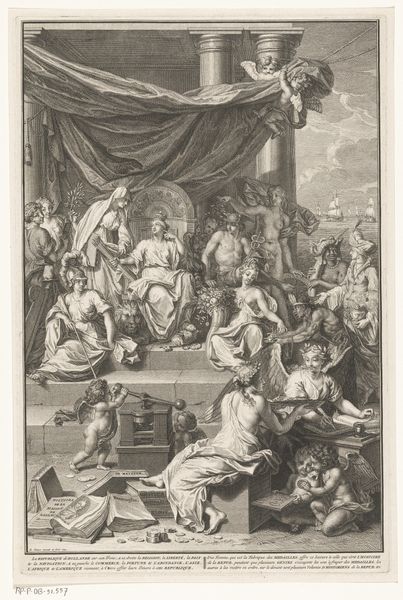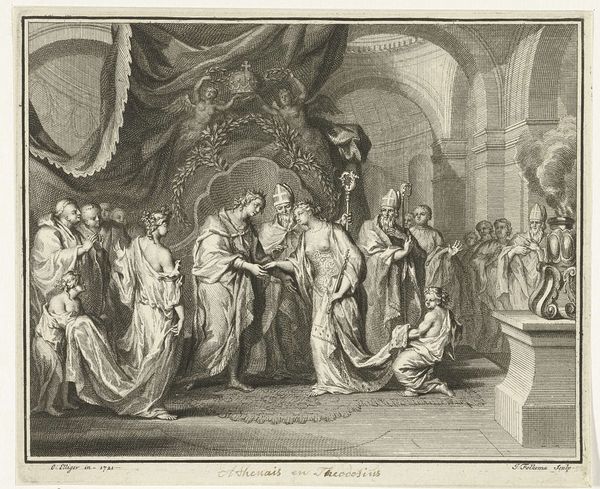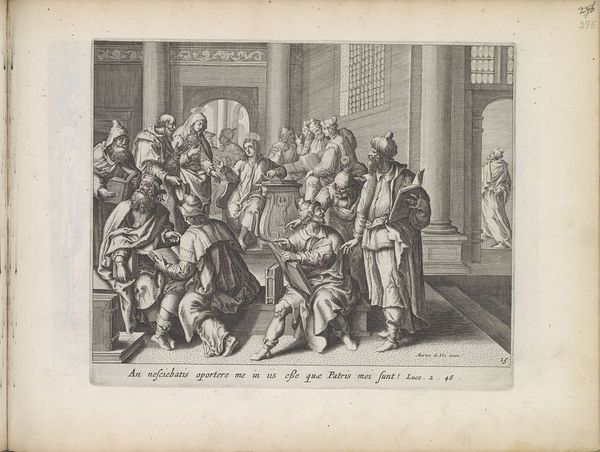
print, engraving
#
allegory
#
baroque
# print
#
old engraving style
#
history-painting
#
engraving
Dimensions: height 449 mm, width 534 mm
Copyright: Rijks Museum: Open Domain
Curator: Pietro Aquila created this engraving between 1660 and 1692. It's titled "Vestaalse Maagden offeren voor het heil van Augustus" or "Vestal Virgins Sacrificing for the Welfare of Augustus," and the scene suggests themes of religious practice and imperial power. Editor: My first impression? It’s dramatic! The billowing smoke, the somber expressions...it feels like everyone's holding their breath in anticipation. Almost a bit theatrical. Curator: Absolutely, that Baroque sensibility! Beyond the drama, what interests me are the layers of social and political messaging inherent to this piece. Vestal Virgins were priestesses of Vesta, goddess of hearth, home, and family. Their purity was linked to the state’s well-being; their sacrifices for Augustus carried immense symbolic weight in affirming his rule. Editor: That's interesting. The whole virgin thing always throws me, especially when linked to power like that. It seems…complex, to put it mildly. But visually, that contrast—the ‘pure’ virgins amidst all that opulent chaos—really draws your eye. The artist's perspective certainly offers commentary on established power dynamics, right? Curator: Definitely. These types of ritualistic acts cemented the ideology around imperial rule. I agree with your sentiment: notions of purity, devotion, and service are central, though they should be approached through an intersectional lens when viewed with today's sensitivities. There's power embedded in their seeming "purity," a purity policed by a patriarchal state. Editor: That's a heavy burden, and something like an engraving brings a different audience to those ideals than the people who actually performed the rituals. Now the print shares all that complexity of social values with…us. And with that stark black and white, there’s just this inherent drama, it brings me in, pulls me into the anxiety, the expectation of the piece. Curator: So, by understanding both the historical context and the underlying social structures we are able to re-examine this engraving through a critical lens. The composition invites us to consider whose stories are prioritized, and who is made to exist within those stories, both back then, and today. Editor: Right! Art never exists in a vacuum, right? It throws history into the present, ready for us to sort through. And I leave wondering, after the fire fades and the rituals are complete, what happens to all these individuals, and these rigid ideas, the very next day.
Comments
No comments
Be the first to comment and join the conversation on the ultimate creative platform.
